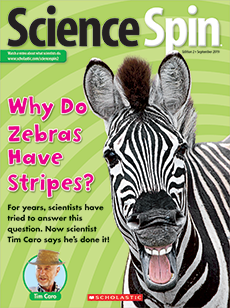January 2023
Get Rolling!
Academic Standards
Reading Objective:
Students will recognize that roller skates are made in steps by workers at a factory.
Reading Level:
Lexile: 450L; GRL: L
Next Generation Science Standards:
K-2-ETS1: Engineering design
2-PS1-2: Materials have properties suited for a purpose
Vocabulary:
leather, sewing machine, flexible
Use these questions to check students’ understanding and stimulate discussion:
1. What is the first step to making roller skates?
(cut the leather)
2. What are eyelets?
(holes that laces go through)
3. In Step 4, what do the workers put on the bottom of the boot? (an insole)
4. Would you like the plate on your roller skates to be made of metal or plastic? Why?
(Answers will vary.)
Go online to print or project the Reading Checkpoint.
- John Joseph Merlin invented roller skates in 1760 and introduced them at a big party. He skated into the ballroom while playing a violin. But his skates couldn’t turn, and he crashed into a big mirror.
- In 1863, inventor James Plimpton made skates that could turn. He opened roller rinks in New York City, and roller skating became popular.
Materials: pencils, empty TP or paper towel tubes, copies of the skill sheet
Overview: Let kids be engineers as they figure out the easiest way to roll a heavy book—on thin pencils or on thicker TP rolls.
Directions:
- Before the lesson, set up workstations with a hardback book and thin and thick cylindrical objects for rolling, such as pencils and TP or paper towel rolls.
- Tell kids that they’ll be engineers! Engineers figure out how to make things in a factory or how to get a job done. Long ago, people found that rolling heavy objects on logs was easier than carrying them.
- Today kids will first roll a book on thin “logs” (pencils).
- Next, they will roll the book on thicker “logs” (TP or paper towel rolls). They’ll compare.
- Give each kid a skill sheet. Divide kids into groups and send them to their workstations. Record findings on the skill sheets.
